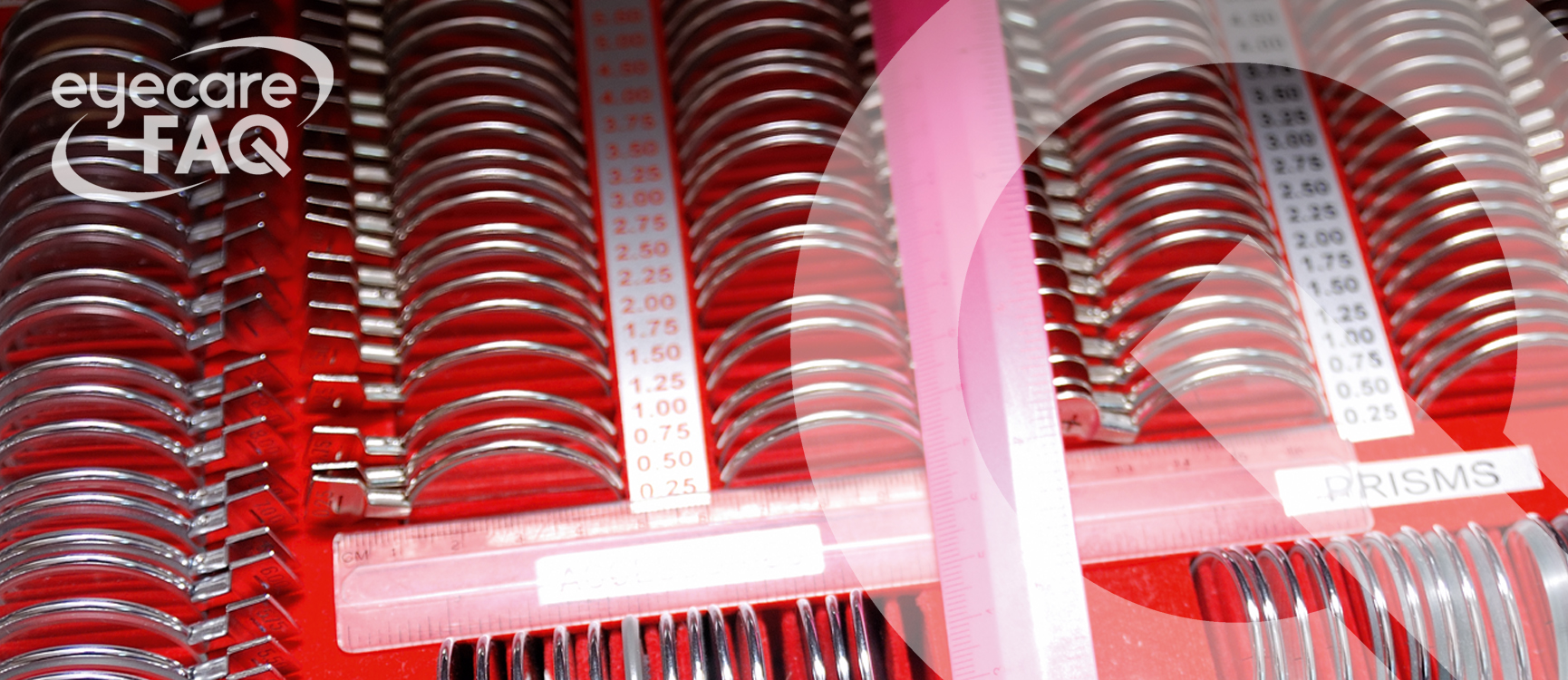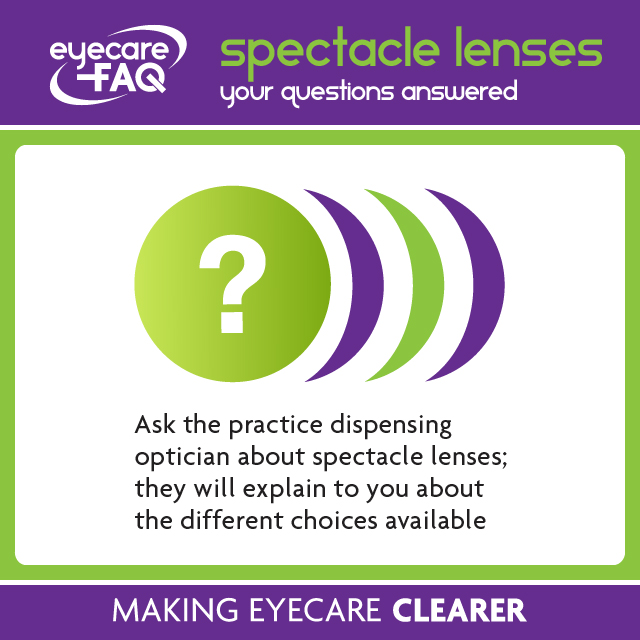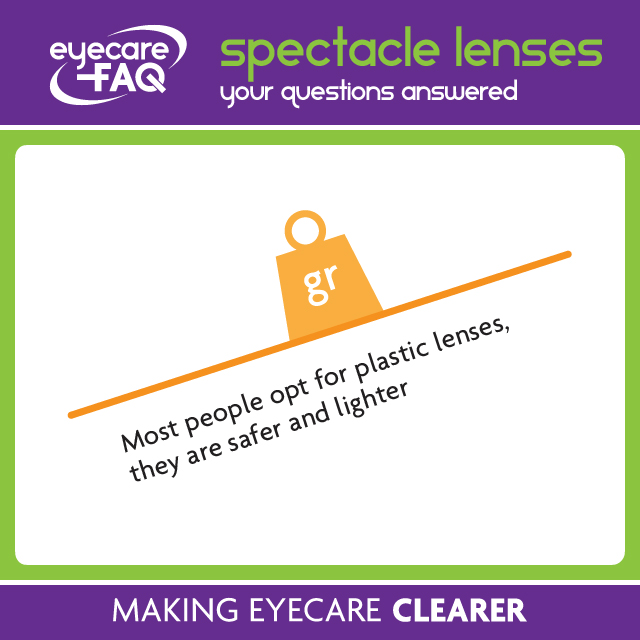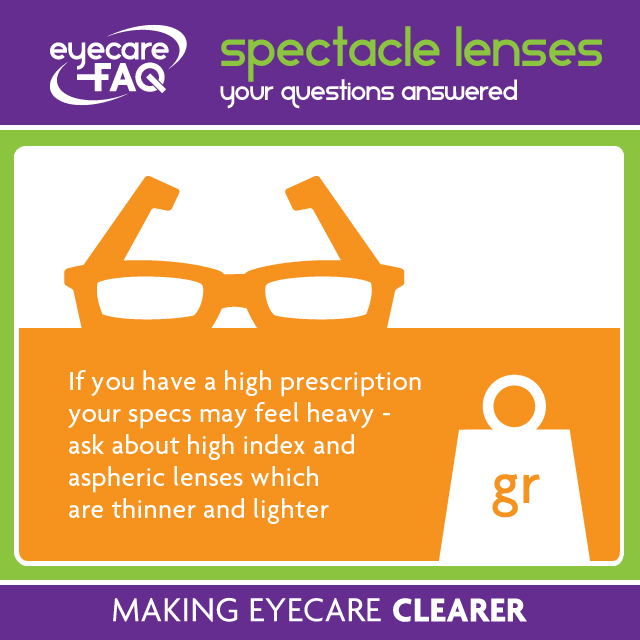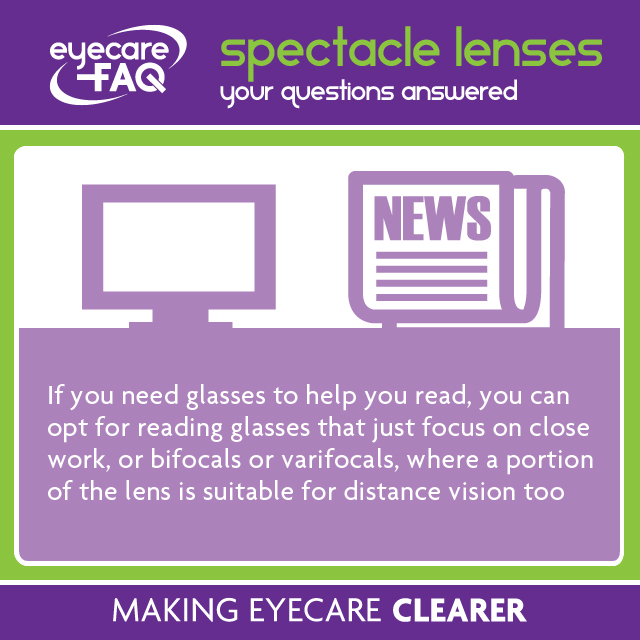It’s the first time I’ve needed glasses. What do I need to know about choosing spectacle lenses?
When you talk to the dispensing optician about your spectacles, they will explain to you about the different lenses that you can choose. Most people opt for plastic lenses today: they are lighter and safer. Plastic is softer than glass and can scratch more easily so you will be offered an anti-scratch coating.
More and more people are opting for an anti-reflection coating. This allows more light to pass through the lens, with the dual benefits of letting you see more clearly, and allowing people to see your eyes clearly too.
I need glasses to help me read. What are my choices?
If you need glasses to help you read, you can opt for glasses that just focus your sight on close work. You may prefer bifocals or varifocals, where a portion of the lens is suitable for distance vision too. People who wear glasses for distance work all the time, and get to the age where they need a different prescription for reading often choose bifocal or varifocal lenses. These allow you to swap from distance to close work without changing spectacles.
Like all new specs, they can take time to get used to. Some people prefer to have a different pair of glasses for distance and for close work. This can work well if you are unsteady on your feet, or if you do one task for a long period of time and don’t need to swap your glasses often.
What is a bifocal lens?
A bifocal lens has a clear division between the top part, for distance vision, and the smaller segment in the bottom half of the lens that helps you focus on reading material. The reading segment can come in different shapes, some with a curved top and some with a flat top.
Your dispensing optician can show you the different designs and help you decide if one is right for you.
What is a varifocal lens?
Varifocal (or ‘progressive’) lenses allow you to see clearly in the distance, then the focus of the lens changes gradually as you lower your gaze, giving you a portion of the lens for intermediate work and the lowest part for focussing on reading material. You can’t see the transition when you look at the lens, unlike bifocal lenses where there is a clear line. Some people choose varifocals because they feel they look less aging, while others like them because of the increased flexibility compared to bifocals. They are handier than having a pair of specs for distance vision and one for close up.
Varifocals come in different designs. Some have a narrow central channel, which is ideal if you mainly look at things in the distance or close up. Others have a wider central portion which might be suitable if you do a lot of work at a middle distance, such as on a work bench or computer. Everyone’s needs will vary, so discuss your lifestyle with your dispensing optician and they will help choose the best lens for you.
Should I choose glass or plastic spectacle lenses?
Today, most people choose plastics lenses. They are lighter than glass lenses, and weigh less on your face. Glass lenses are a little thinner than a plastic lens of the same prescription. Plastic is more break resistant, so is significantly safer, provides more protection and cannot splinter. Plastic is softer and more likely to scratch, but the chance of scratches can be reduced with an anti-scratch coating. Plastic lenses are easier to tint in a range of colours too.
What are the best type of lenses for high levels of short-sightedness?
If you are very short-sighted, your spectacle lenses can feel thick and heavy and make your eyes appear smaller. High index materials have been developed which allow your lenses to be thinner and lighter. Ask the dispensing optician to talk to you about better lens materials and designs.
What are the best sort of lenses for high levels of long-sightedness?
If you are very long-sighted, your spectacle lenses can feel thick and heavy and magnify your eyes. Aspheric lens designs can thin and flatten the lens, reducing the magnifying effect. High index materials have been developed which allow your lenses to be thinner and lighter. Ask the dispensing optician to talk to you about better lens materials and designs.
What is a lenticular lens and who might it help?
Some people with very high spectacle prescriptions benefit from lenticular lenses. The part of the lens that helps you to see better is in the centre, within a wider border of clear lens, giving a shape like a fried egg. This cuts the central thickness of the lens and ensures the specs are lighter.
What is a slab-off bifocal and who might it help?
A slab-off lens can help if you have a difference between your two eyes, and also need different powers of spectacle lens for distance and near vision. This can lead to an imbalance between the two eyes when you try to read. The slab-off technique can be applied to bifocal and varifocal lenses. By altering the angle at which one lens is ground you can avoid the lenses inducing double vision.
What is a Franklin split lens and who might it help?
Franklin split lenses are special bifocals which provide a very wide zone for near vision. They are produced by cementing together two lens halves, one the distance portion and one the near portion. They can help people who have a difference between their two eyes to avoid vertical jump or imbalance.
What are freeform lenses?
Freeform lenses use computer-aided design and surfacing to create high-level, customised spectacle lenses with your unique prescription. They can help to reduce glare and halo effects caused by light sources at night, such as car headlights.
How are freeform lenses made?
To create freeform lenses, once you have chosen a frame, the Registered Dispensing Optician will fit the frame to your face. They will then scan your eyes using specialized equipment that measures your face and eye position. They will also measure how the frame sits in front of your eyes, how it wraps around your face, and even how you tilt your head. The software combines your physical data with your spectacle prescription in order to provide the best vision, day and night. The optician will send your order direct to an optical lab. Your lenses will be created on a computer-driven, free-form generator. This machine is able to work to extremely high levels of accuracy and can generate more complex surface shapes than traditional glazing equipment. The lenses are then fitted to your frame. Finally, the Registered Dispensing Optician will readjust the frame for the best fit on your face.
Why should I choose freeform lenses?
Freeform lenses use an advanced manufacturing technique which reduces aberrations in spectacle lenses. You may not notice spectacle lens aberrations, or if you have a high prescription and high index lenses you may have noticed a coloured tint to the periphery of what you can see when you are looking away from the centre of your lens. Advances in lens manufacturing mean that lenses can be made without these aberrations. If you want sharper vision, or suffer from glare and problems with night vision, talk to a Registered Dispensing Optician about freeform lenses.
Who will benefit from freeform lenses?
Anyone can benefit from freeform lenses, but you will find most benefit if you have a high prescription, if you are bothered by glare or your vision seems indistinct. Make sure that you have had a recent eye examination, then talk to a Registered Dispensing Optician about freeform lenses.
Which part of the spectacle lens should I look through?
Every spectacle lens has a centre, and you should be looking through the centre of your lenses. When you select your frame the Dispensing Optician will mark up where your eyes are centred within the frame. Your spectacle lenses will be cut so that their centre lines up with your pupils, ensuring that you look through the correct part for crisp clear vision. On collecting your specs your Dispensing Optician will again check that the lenses are centred correctly.
Over time, however, your spectacle frames can become loose through taking them on and off. You may want to return to the optician every few months for adjustments so that you continue to get optimum vision.
